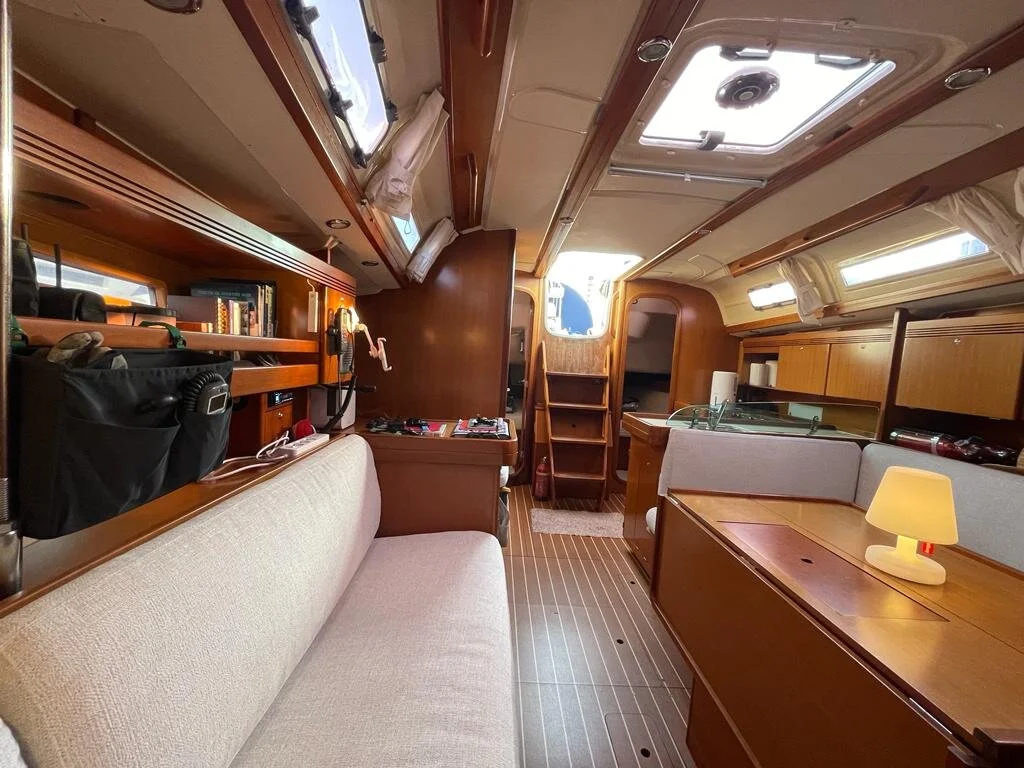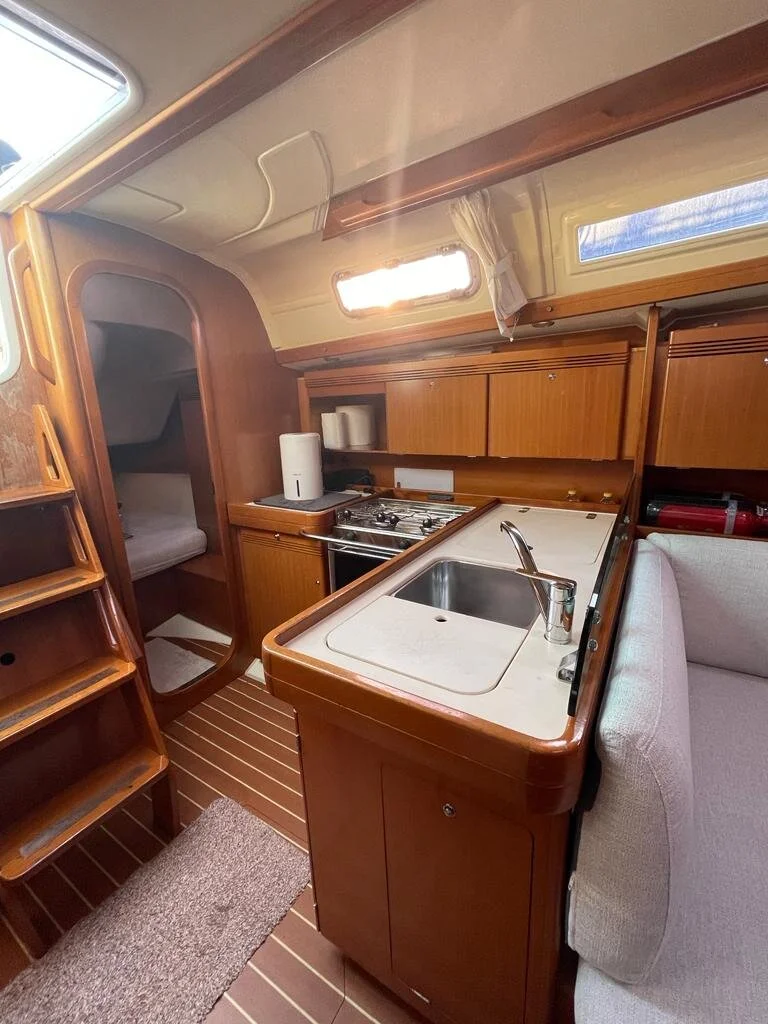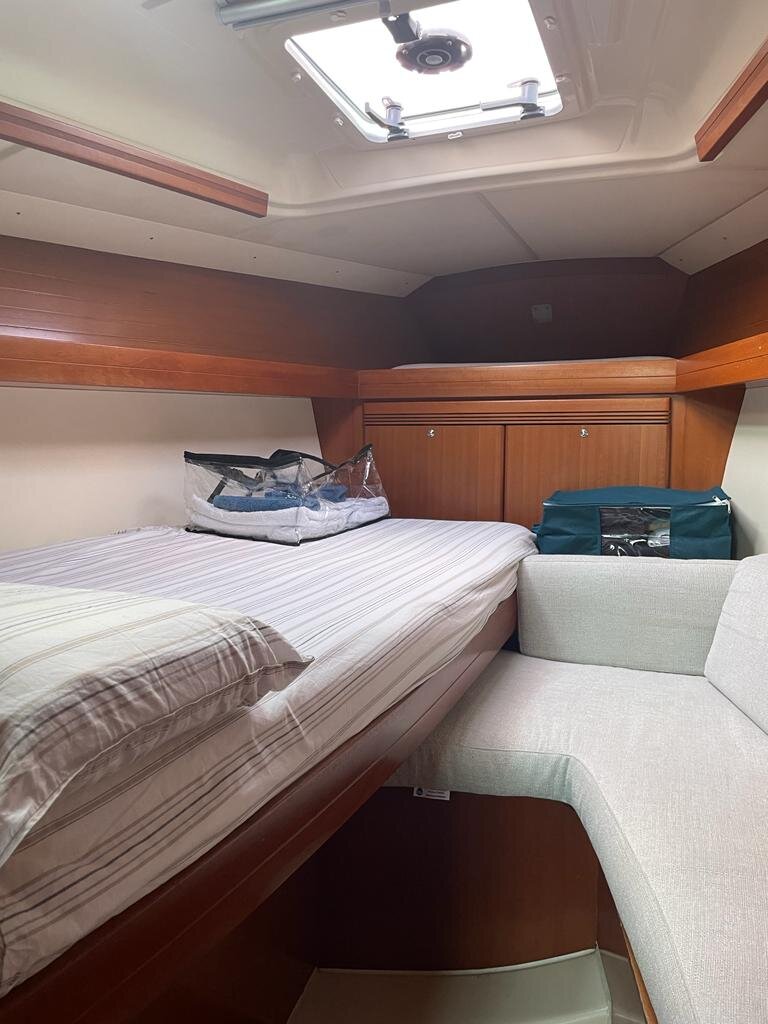pegaso - dufour 40 e performance
The European yachting public demands fast boats, so every major builder has in its catalogue a plum-stemmed, long-waterline 40ft hull that sails fast and rates well. This 40-footer is the first of a new line from French builder Dufour who, though most people have forgotten, revolutionised production yachts with its Arpege, a 30-footer which, come to think of it, anticipated the trend to fast and light production cruiser/ racers more than 30 years ago. Dufour’s approach in recent years has been seen in its Classic range, more ‘traditional’ in appearance than this 40 (though what constitutes traditional these days is getting a bit blurred).
According to Pacific Yachting’s Rod Mackay, Dufour’s acquisition of the Gib Sea line enables them to develop Gib Sea as a pure cruiser/charter line, so the Dufour range can become more performance oriented. The existing Classic range continues; the performance boats will be developed as a separate stream. Already the catalogue shows a 34 and 44 as well as the 40. Umberto Felci designed the new hulls; Patrick Roseo, who has fresh ideas, did cockpit and deck layout and interior. The lines show a long waterline and beamy stern (though no dimensions are extreme) with a 2.1m lead keel featuring a flared bulb and modest aspect ratio. You can specify a cast iron keel with 1.6m draft. The hull is a PVC/glass/Kevlar vacuumed sandwich with a moulded grid internal structure for strength. The deck moulding is resin-injected and vacuum-bagged to keep weight down.
The hull’s displacement/length ratio is quite low (around 166) so it should be easily driven, and the stability curve (as designed) shows the angle of diminishing stability to be very high. The standard boat rates at 1.047 (IRC); a taller mast is an option. You can have two cabins with one head; three cabins with one head (as on this boat) and three cabins with two heads. If you opt for the latter the second bathroom is en suite with the owner’s cabin forward; in effect the main bunk is moved towards the bow to make space for the bathroom.
The interior is trimmed in maobi mahogany, which is a darkish timber with unusually uniform grain and colouring. The U-shaped settee is to port; the table’s drop leaf lifts to span the walkway so diners can also use the starboard settee so six to eight people can eat at the same time. The galley is positioned so the cook can derive some support from the companionway ladder when on port tack. There are two sinks, a twin-burner and oven stove, and alongside is a clever stowage cupboard with removable plastic drawers. The nav area is a good size The three cabins are roomy with hanging and shelved lockers, and extensive shelving down the hull sides.
The test boat had the optional fabric on the saloon settee, which was an alcantara-style suede-like material. Headroom is around 6ft 5in (sorry, 1.95m) alongside the galley and only an inch or two less as you move forward. The rig is simple – twin spreaders with some sweepback, discontinuous D2s, single lowers, single backstay with mechanical tensioner operated by the winch handle. Chainplates are inboard, connected by below-decks struts from deck level to the hull support structure in the bilge area. This boat has the optional teak deck and electric anchor winch. The anchor can be carried on the bow fitting, revealing the chain locker to be very big.
The cockpit layout is simple and immensely clever. One wheel means big diameter; there is good foot support and a timber pad for the bum when sitting on the sidedecks. The main traveller is on the cockpit floor; a 5:1 tackle trims the main with a cammed block mounted at floor level. The traveller has a 4:1 either side with cams on the vertical seat sides and they be reached easily by the helmsman as he leans around the wheel and gives a vertical heave. The skipper can also reach the primary winches (Harken Number 48 self-tailers) just ahead of the helm. Single-handing, important when picnic sailing, is easy.
Here are the clever bits. Just I was thinking the tackle mainsheet might be hard work in a blow Greg showed me that the mainsheet is double-ended and that if it is cammed off at the block you can run the other tail to one of the secondary winches on the coachroof to provide fine-trimming capability and extra grunt when sheet loads are high. Rod then pointed out that the headsail sheets can be led from the turning blocks to the coachroof winches, so the crew can work and trim from the more forward position. Clever and the helmsman’s seat is flat, but there is a reason. When sailing offshore the life raft stows under the seat. When the raft is absent the seat drops down to deck level and forms a step, opening the transom so people can step through to the boarding area and swim ladder.
The Dufour 40 has had two third places under IRC in major Euro regattas last northern season, including the Cowes- Dinard-St. Malo, one of the classic Channel events, which has been run since Hornblower was a midshipman. Our boat had the standard Elvstrom main (which Rod commented could have been bigger on the foot, with more roach) and a medium Number One of about 140 per cent built by the Sydney North loft. She accelerated quickly to full speed in a soft 10-knot breeze. The boat feels quick on her feet, promoting the sensation that her construction weight has indeed been well controlled as promised in the specs. The steering is firmly weighted with no lost motion and near-neutral helm; upwind in 10 knots or so, I could release the wheel and the boat would steer itself.
The Dufour 40 is easy to sail because it is simple and well laid out. Greg delivered her to Hamilton Island for Race Week and reports that she handled well in a blow both upwind and down. The helm position worked fine in the light conditions of our sail; the tufts were seen easily from the sitting position either side and the helmsman really can wind on the self-tailing headsail winches with one hand, if tuning is needed, or move around to the front of the binnacle and adjust the main while keeping one hand on the wheel, if needed. This boat had the optional teak deck, electric anchor winch, headsail furler and bigger auxiliary – a 55hp Volvo Penta instead of the standard 40hp.
Interior
El interior impresiona a la vez con el espacio y los accesorios dignos de un gran yate de crucero. Los acabados están realizados en madera clara Moabi de primera calidad. Las puertas de las cabinas vienen con cierres y pestillos anti-vibración. Los suelos estratificados en Moabi de calidad marina. Los colchones antialérgicos en camarotes y las colchonetas del salón antelina beig con fundas lavables.






